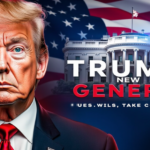| Heading | Subheading |
|---|---|
| 1. Introduction | Overview of Veterans Day and its significance |
| 2. The Significance of Veterans Day | History of Veterans Day |
| Transition from Armistice Day to Veterans Day | |
| Importance of honoring both living and deceased veterans | |
| 3. Honoring Veterans: The Heart of the Celebration | Nationwide ceremonies and tributes |
| Wreaths Across America | |
| Community involvement and support from businesses | |
| 4. The Road Ahead: Supporting Veterans in Civilian Life | Challenges veterans face after service |
| Employment, healthcare, and mental health issues | |
| 5. Healthcare and Mental Health | PTSD and other mental health challenges |
| Support from the Department of Veterans Affairs | |
| Programs like the Veterans Crisis Line | |
| 6. Employment and Education | Connecting veterans to civilian jobs |
| GI Bill and education benefits | |
| Navigating the complexities of the GI Bill | |
| 7. Building a Stronger Future for Veterans | Comprehensive support programs |
| How veterans can thrive post-service | |
| Encouraging ongoing involvement in veteran welfare | |
| 8. The Role of the American Public | How individuals can contribute |
| Volunteering and supporting local veterans | |
| Donations and outreach programs | |
| 9. Conclusion | Recap of honoring veterans and the need for continued support |
| Reflecting on the challenges and opportunities for veterans’ future |

Introduction
Veterans Day: Reflection and Tribute to Those Valiant Men and Women Serving in the U.S. Army Regarding the most important holidays that occur every year on November 11th. Veterans Day is the one which isn’t just a holiday that commemorates the sacrifices by these heroes but reminds people to take more responsibility and commitment toward veterans as they return back to their civilian life with a new future for themselves and their families.
Role of Veterans Day
Veterans Day is an end tribute to World War I, November 11, 1918. At the eleventh hour of the eleventh day of the eleventh month, the armistice was signed between the Allies and Germany officially marking the end of the conflicts between the two parties. President Eisenhower proclaimed November 11, 1954 as Veterans Day to honor all eligible veterans living and dead who served in or supporting any armed conflict or before any foreign military arm or during any period of hostility.
Whereas Memorial Day is considered the day for remembering the dead soldiers, Veterans Day is recognized as the day for living veterans who have committed all their time, energy, and most importantly both physical and mental well-being in the service of their nation. It is a day of reflection on their strength and sacrifices and resiliency they carry out and to pay respects for problems they face once they come back home.
Honoring Veterans: The Heart of Celebrations
From coast-to-coast, they pay respects to veterans in ceremonies and parades and with quiet reflection. Schools, communities, and government agencies find ways to thank those who served, inviting them to share their stories and letting the next generation know why service is important.
Perhaps the most emotional tributes to Veterans Day occur through the annual laying of national cemeteries wreaths. These emblems signify respect and appreciation on the part of the American people regarding what sacrifices the veterans had made. From being small, community-based, the “Wreaths Across America” program has exploded into a nationalistic movement which ensures that veterans’ graves are honored every year.
Many organizations also celebrate by giving a discount or free meal on Veterans Day for honoring the veterans. Little gestures speak a lot of gratitude and illustrate that the work of such persons is important.

The Way to the Future: Advocating for Veterans in American Life
Just as much as Veterans Day is celebrated for the victory of men and women who came to serve, it also has a way of relating to hardships that veterans might experience when returning to life in civilian society. Transition from military to civilian life might be challenging; many veterans might feel alienated or unable to find any stable employment, healthcare, or even housing.
According to the U.S. Department of Veterans Affairs, for instance, nearly a tenth of veterans claim to be suffering from post-traumatic stress disorder, or PTSD, and many more are afflicted with physical injuries that intrude into every waking moment. The unemployment level for veterans is also often higher, especially for those transitioning from active duty. All this creates a need for efforts to continue supporting these veterans once their service is done.
Healthcare and Mental Health
Among the issues that were fairly recently added to the list to which the retiring veterans will have to attend are mental health problems. These range from post-traumatic stress disorder, depression, anxiety, and alcohol and drug abuse. Improvement in the mental health care for veterans is one of those areas that much needs to be done by the Department of Veterans Affairs, and indeed, among those is the offering of programs such as the Veterans Crisis Line, where they receive confidential support whenever they need it.
More than often, veterans are shut out from receiving the care they so desperately need because the bureaucracy has excluded them, takes too long, or is lacking in a given area. Community-based programs, such as Wounded Warrior Project and the American Legion, offer additional counseling and peer-to-peer support groups and outreach to ensure veterans are properly taken care of.
Employment and Education
Employment and education is another large area where veterans will be supported. Skills acquired in military easily go with various civilian occupations, but expressing that in the civilian workforce proves hard for the veterans. Organizations, such as Hire Heroes USA, work specifically with a focus on connecting veterans to employers who value their military experience.
In addition, veterans receive education benefits under the GI Bill, whereby they receive payment for either college or vocational training. Although that is technically true, to most veterans, such benefits are hardly negotiated through the intervening layers of the GI Bill to cover all expenses.
Building a Better Future for Veterans
No stretch it is by no means easy, but hope at least does lie in the future for veterans. The more we serve those veteran comrades with solid support and resources, the more likely they are to find success in civilian life. Whether it’s mental health services or job counseling educational opportunities, it’s just a matter of community involvement that reminds them that their service is not forgotten.
We, as a nation, must strive to build the type of overarching society of respect, empathy, and understanding for the men and women who serve. Veterans Day reminds us to honor them on that one special day but to also support and care for them throughout the 365 days of the year by honoring their contributions and enabling them to rebuild once they have served and return home.
It could be by sectors of government and nonprofit organizations, volunteering to work at any VA hospital within your reach, charity organizations focusing on the veterans, or even something positive saying their value and worth. That will be enough to make veterans feel valuable.
No words can qualify the contributions they have made to the security and prosperity of our nation, given the magnitude of sacrifices veterans have made. On this Veterans Day, we celebrate their heroic past while committing ourselves to ensuring that the future they deserve is full of opportunities, dignity, and hope.
Conclusion
It is worthwhile to remember the problems faced by veterans in years following the service on a day like Veterans Day when it is celebrated with honour and sacrifice. For an army like that, the celebration of heroism still remains incomplete unless the processes still ongoing for assistance to lead a civilian life are underlined. We can ensure that our veterans receive all due respect for everything they have given and make their way forward in success by advocating further, providing comprehensive services, and participating in community activities.



Pingback: Trump Chooses Susie Wiles to Lead His Team